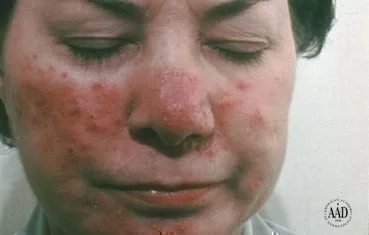Many signs suggest the sun is partially to blame for rosacea: the condition is more common in fair-skinned people, sunlight alone can induce transient flushing, and even skin biopsies of rosacea tend to show increased levels of sun damage. The exact mechanism of this effect is unclear, and most studies suggest a complex interplay between multiple factors.

The two primary forms of UV light have been implicated in different ways. (Remember, UVA has a longer wavelength and penetrates deeper, whereas B has a shorter wavelength but transmits more energy). Collagen-crushing enzymes call matrix-metalloproteinases (MMPs, for short) primarily induced by UVA, while UVB tends to increase production of growth factors which may contribute to blood vessel overgrowth.

Both forms of UV radiation contributed to reactive-oxygen species (various molecules that are targeted the targets of antioxidants) and rosacea patients have been shown to have higher levels than unaffected individuals. To complicate matter further, cathelicidin, an important pro-inflammatory molecule in rosacea, seems to be induced by vitamin D (which is activated in the skin by UV-light).

Even in the face of inexact science, it’s clear that sun protection and avoidance is worthwhile, especially in difficult to control cases of rosacea. There are many strategies that can be employed, but perhaps the easiest is to consider a daily broad-spectrum SPF30+ moisturizer or brush-on product that you’d be willing to use regularly (Because UVA penetrates clouds and glass windows, this suggests that sunscreen should be worn daily whenever planning to be outdoors, regardless of weather conditions.)
